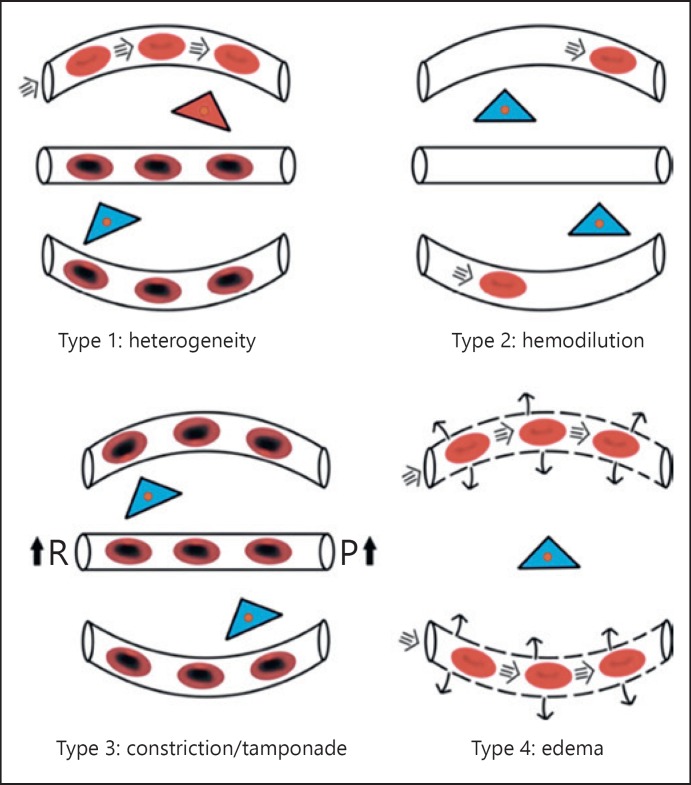Fig. 3.
Condition of microcirculatory alterations associated with loss of hemodynamic coherence and reduced oxygen capacity of the tissues. Type 1: Heterogenous RBC flow caused by RBC and endothelial cell injury induced for example by sepsis results in RBC stagnant capillaries next to perfused capillaries resulting in microcirculatory shunts and a reduction of tissue oxygen extraction capacity. Type 2: A decrease in the oxygen-carrying potential of the microcirculation due to hemodilution induced anemia resulting from a low FCD. Type 3: A stasis in the RBC flow due to increased vascular resistance (R) [37] and/or elevated venous pressure (P) [38]. Type 4: Increased oxygen diffusion distances due to edema caused by capillary leak syndrome. Adapted from Ince [67].

